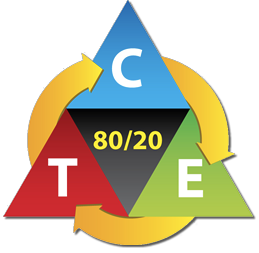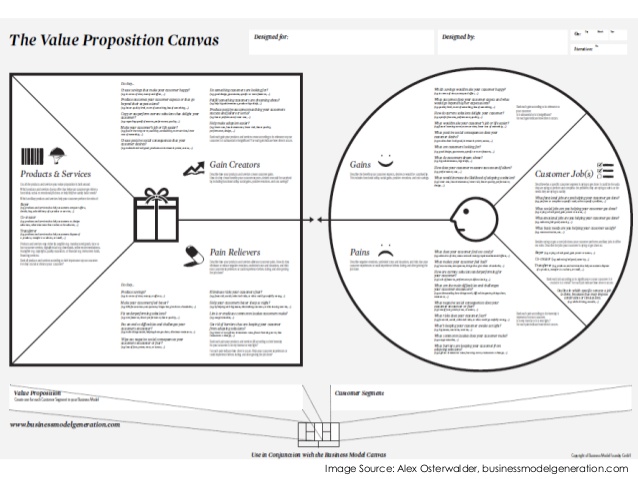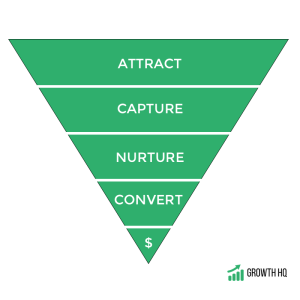Have you tried guessing what another person is thinking?
It’s downright difficult, right?
But is it possible to somehow get what another person, especially customers, are thinking?
I wouldn’t have believed it if I haven’t experienced it, but I’d say “Yes, definitely!”
Many marketers are skeptical about this but big brands have been using this since time immemorial.
I’m talking about your buyer persona.
Let me tell you how.
The Importance of Buyer Persona
I would be a fool to object to the power of a skillfully crafted buyer persona, because it can literally boost conversions.
Extensive knowledge of your buyer persona could lead to better sales. It can give you better opportunities to grow your business in no time. You can fine-tune your products and services that it becomes a valuable commodity to your target market.
But creating a buyer persona is not a magical hat trick.
You don’t need some paranormal powers to give you a clear picture of your consumers. What you must do is to conduct a comprehensive research.
This can accurately determine the way your buyers think.
Decoding the Buyer Psychology
We all know what a buyer persona really is, but what’s important now is to determine the reason why so many marketers fail to create a “useful buyer persona.”
Most marketers are disappointed with their persona profile, since it’s just random noise and comments. It doesn’t have some conclusive facts about their target customer.
They failed to establish a method that can accurately define the psychology of their prospects. To be honest with you producing such a method is no walk in the park.
So, where do we start? To determine your prospects’ buyer psychology, you must first understand the purchase cycle and pinpoint the stages where they encounter various hindrances.
- Problem Recognition – this is the stage when a consumer recognises a problem or a need that must be addressed by a certain solution. Usually, buyers in this stage will recognise the difference between an ideal situation than the actual situation they are in.
- Searching for a Solution – during this stage, consumers will look for a solution that could bring them closer to an ideal situation. They will use all possible means at their disposal; consumers will use the Internet, TV, and print media to find a product or service that will solve their problems.
- Evaluation – this is an important step in the purchase cycle, and it’s in this stage where the buyers encounter several hindrances. These factors could affect their buying decisions. That is why it is essential for you to find ways to eliminate it. These hindrances could be the price, prestige of a product or service, availability, lack of reviews from certified sources, etc.
- Purchase Decision – the steps towards the purchase decision could differ for each consumer out there. Some buyers will wait until they find all the answers to their questions before they make the decision. Others will rely on product reviews or recommendations from their friends, families or well-known personalities. While others would look for a way to try out a product or solution before they purchase it.
As a business owner, you must have several contingency plans for each option, so your buyers are well-informed of your product and services. This will give them all the reasons to purchase what you offer.
Factors that Affect the Buying Decision of Consumers
There are 5 essential factors to consider that will reveal the buying decision of a consumer. These will include the following:
- Initiative
You need to determine the circumstance that causes a buyer to invest his or her budget, time and effort to resolve a particular problem or need. What makes them tick and encourages them to prioritise a solution? This is the question that you must answer to fully understand their motivation towards a product or service.
- Benefits
What are the results that your prospects expect from a solution? This one is obvious, since a buyer will expect something from a product or service. If you know their expectations, then you can develop your product based on what they want to see.
- Perceived Barriers
This is also known as the bad news insight, since it will tell you the reasons why your buyer will not buy from you. What are the barriers or past experiences that led them to believe your solution is not their best option? You must know what’s behind these barriers and eliminate it.
- Stages of Consumer Buying Process
Having an accurate understanding of your consumer buying process will enable you to support the buyer in each particular stage. This means that you can focus some resources that will amplify the impact in a given stage. You can use content marketing or your social media channels to engage prospects and move them closer to your brand.
- Decision Criteria
This is a crucial insight that will tell you the specific features a buyer would want to hear from you and why. You must identify at least three to five features that matter most to your buyers. Keep in mind that you are helping them make a decision through your messages. Hence, give them a reason to choose you over your competitors.
Acquiring the Data for your Buyer Persona
How do you get these data for your persona, anyway? Do you go to a psychic and ask the fortune ball about it?
Of course not! You will get the insights directly from the consumers through the following means:
- Telephone Interview – you can craft an accurate persona from just six to ten good telephone interviews. To do this, you can assign people from your team who possess good oral communication skills. It is a must to train them well since this is a crucial factor in the whole process. Interviewing requires skills and that can be developed through constant practice.
- Online Surveys- these are surveys that you can post on your site. However, you need to ensure that there is a reward to those will take part in it. Also, the people who you will contact for the survey must be an existing customer.
Who Must You Interview?
When your team is ready to interview, you can search for:
- Old Customers – customers that have purchase from your business in the past several months.
- Fora – you can also search for online forums within your industry and pick people that are closely related to your target persona.
- Social Media Sites – it is possible to get interviewees in Facebook, Twitter, LinkedIn or other social media sites that you have used in the past. Look for people who you engaged before and are willing to take part in your interview.
Always remember, search for people from these platforms that match your buyer’s profile. It is not hard to convince them to join the interview, so long as you can offer them something in return for their efforts.
Good ol’ ideas.
Most of us aren’t short of them..
..until we need a good one.
I’ve run teams of people from two to twenty two and there was regularly a need to come up with ideas to execute.
Everyone piles into a room with a whiteboard. Shouts out some stuff, takes a photo and goes away to execute their interpretation of what was talked about.
The ‘rules’ of brainstorming generally are:
- Judgement and criticism are barred
- Wildness of ideas is encouraged
- Large quantity of ideas is desirable
- Combining and building off ideas is encouraged
There’s a big problem with the first 3 and the last one is underrated; but more on that in a minute.
First the problems:
“Judgement and criticism are barred” – In this environment extroverts tend to dominate exchanges. They are more likely to push ‘their’ idea. Even if it’s obvious to others it is weak. Introverts are less likely to push their idea and tend to suffer from stage fright, especially in large groups.
“Wildness of ideas is encouraged” – the majority of the time boring ideas are easier, cheaper and faster to execute. Wild ideas may make you look cool but often come with a level of complexity that mean they shouldn’t be a priority.
“Large quantity of ideas” – in my experience even the largest, most well resourced organisations lack the resource to execute large number of changes all at once. Picking your priorities is key. Having a large quantity of ideas just creates decision fatigue and FOMO.
“Combining and building off ideas is encouraged” – it’s not encouraged but it’s essential. But for the reasons I’ve already listed it doesn’t often happen.
One of my favourite writers, James Altucher calls it Idea Sex. Two ideas come together and create a better idea. You need to create an environment where everyone’s ideas come together and make sweet love….
Better Brainstorming
To create an environment where people aren’t afraid of voicing a ‘bad’ idea (there’s no such thing) and for creativity to flourish you need to create anonymity and collaboration.
This is how it works:
- Book a time in the participants diary. 20-30 minutes is plenty.
- Send them a link to a shared document set to public (template below)
- Populate the sheet with a couple of ideas of your own
- Watch those ideas and others develop into something magical.

The document is simple. Column 1 has the core idea, Column 2 an improvement or combination of another idea. If it makes it to Column 3 you’ve made a decision.
You can use this to get ideas for blog posts, marketing campaign, A/B tests – pretty much anything.
Here’s the template. Save A Copy to your own Google Drive.
Now you’ve got a faster more effective way to come up with ideas and grow your business.
Content, content, content.
It’s a word that has come into vogue with numerous examples of companies experiencing rapid growth through content marketing.
The stats are pretty compelling;
57% of purchase decisions are made before a customer ever talks to a supplier, and Gartner predicts that by 2020, customers will manage 85% of their relationship with an enterprise without interacting with a human. (Target Marketing)
Trailing only retail and brand sites, blogs rank as the third most influential digital resource guiding consumer purchasing decisions. (Marketing Magazine)
But once you start there are some hidden challenges with content marketing and content creation.
“28% of corporate marketers cite the difficulty of frequent blogging as a top SEO challenge.” (MediaPost)
I’m surprised that stat isn’t higher.
Two of the most common questions that businesses ask me is:
How do we know what content to create?
How do we create more content?

Even for full time publishers creating quality content at scale is challenging. As evidenced by the amount of my content that gets published in other places. (of course writing good stuff helps!)
I’ve complied a list of tactics that I’ve used myself and implemented in dozens of businesses of varying sizes and industries.
Creating Better Content
Often content creation feels like throwing ‘stuff’ at a wall and seeing what sticks. We look at vanity metrics like social shares and page views but not many businesses measure the impact further down the funnel unless they are committed to marketing automation.
So how do know the content you are creating or ideas your coming up with are actually useless to your prospects and customers?
Crowd Sourcing – The 5 Day Q&A
Your business comes into content with customers every day via multiple channels. Sales, customer service, support are all interacting with customers right now. The questions your customers are asking show the pains and gains that the customer is looking to fix in using your product or service. The 5 Day Q&A is a way for your customers to give you the topics that you can create content around.
This is how it works:
- Get every customer facing person in your business to write down the questions that prospects and customers have asked them during the course of a week.
- Collect them in a shared document (Google Docs is perfect)
- At the end of the week collate them and look for patterns and issues.
- Use these as headlines for your next piece of content
I guarantee there will be half a dozen questions that come up multiple times. Guess what? Your customers all also asking your competition and typing these terms into Google. Creating content around these specific issues will get you there first and you know these are issues that are helpful to your market.
Data Driven – Site Search
The majority of purchase journeys start with some type of search. That could be a general web search or search on a destination site.
All of the mainstream analytics offer the ability to track what search terms are being used on your site.

This data is a goldmine of customer intent.
It will show you what long tail questions are being asked, what gaps could be in your range or products and the most common key phrases you may or may not be covering in your content.
If you’re not already tracking it then start now.
Buzzsumo
Did you know there’s a place to find out what content is being shared and read by your prospective audience? It’s called Buzzsumo. and it’s free (premium options are available)
It’s a great place to validate ideas and frame content you intend to create.

Take the actual share numbers with a pinch of salt but the headlines and topics are a great source.
Creating More Content
A common frustration of marketing and communications teams is getting other people in the business to create content. From the C-suite down there is a wealth of knowledge in the business but often getting these people to produce content is challenging.
Outsourcing
I love writing but know it’s not everyones cup of tea. There are large number of freelancers and agencies out there who can do it for you. In highly technical or regulated industries it can be challenging to find the right fit but I recommend you try it. Here’s two agencies that offer high quality work: Lingo and Away with Words.
Audio Interviews
The average person speaks at 7000 – 9000 words per hour. Imagine how many articles and pieces of content you could leverage out of that volume of words. A well structured interview can cover multiple topics. I’ve found this especially effective with senior executives and technical people who are often reluctant to produce written content. Framing these people as an industry expert is an added bonus to the business and them individually.
A USB microphone and a transcription service are all you need to get going.
Video
The amount of video consumed online doubled between 2012 and 2015.
You probably have a device in your pocket that can record HD video.
Video is a great medium as you can take one piece of content and turn it into multiple content types.
- Split the audio track and publish as a podcast
- Transcribed and turned into an article
- Take screenshots from the video for a presentation
- Edit into multiple short, bite sized videos
As brands become publishers in their own right and the value of marketing automation is realised the demands of producing high quality content are going to increase.
Experiment with different types of content and creation methods to make sure you ride the content wave.
I’ve been working with an online retailer recently who operates in the NZ and Australian markets. They have built up a reputation for quality products at affordable prices. Halfway through the discovery day in Auckland we had identified a number of areas they could improve their marketing and overall performance. One of the directors said “With all these things we have to improve, it’s amazing we got this far”.
The reason they have built up a multi-million dollar online business with thousands of customers is they have a very good product. From design to manufacturing to customer service they are good across the board. Sure, none of their marketing is ‘perfect’ and the changes we will make will add over $500k in sales in the next 12 months but they have such a strong base that working with me is just accelerating their growth.
Businesses are being presented with such a vast number of options these days to market and reach customers that the focus on the product is sometimes lost.
In a hyper connected consumer world the old cliche that ‘you can’t polish a turd’ has never been more true.
Using frameworks like the Value Proposition Canvas not only steer you towards the right way to market your product, they highlight areas that your product could be falling down.
Rather than thinking about the next marketing tactic stop and think about how you can improve your product. The marketing will be vastly more successful.
Warren Buffet has built a $66 billion dollar fortune and become one of the most famous investors of our time. Buffet has a slightly less well known confident and partner called Charlie Munger.
Buffett credits him with much of the success of his investing approach:
“Charlie shoved me in the direction of not just buying bargains, as Ben Graham had taught me. This was the real impact Charlie had on me. It took a powerful force to move me on from Graham’s limiting views. It was the power of Charlie’s mind. He expanded my horizons.”
Munger does this through models.
He has come to the conclusion that in order to make better decisions in business and in life, you must find and understand the core principles and organise them in a method you can act on.
Charlie and I are the same (apart from a few billion dollars) we both believe the robust models are the most efficient and effective way to apply learning and make changes.
When I spend time with a business and help them with marketing and growth strategy we use frameworks and models to collate information, get clarity and make definitive actions.
There are many depending on the stage the business is at; startup or established; and the industry they are in.
Here’s a couple of frameworks that can help you get clarity and move forward.
The Tactical Triangle

The triangle was popularised by Perry Marshall:
“The Triangle says: In order to sell something, you have to get Traffic; then you have to Convert the traffic; and Economics means you have to make some money on what you sell – which is why you went into business in the first place.”
Businesses inherently know that they want to improve all those factors. So they try multiple ways of improving everything at once without measuring which one is the most effective use of scarce resources; time and money.
I use the triangle to give a business priorities based on what is going to give us the biggest return. Focusing on a single metric then gives you a shorter list of how you can achieve it.
An example for an online retailer:
- Traffic – improve email to generate more click throughs to site’
- Conversions – add a new payment option
- Economics – bundling products to increase transaction value
The power of the triangle is that every metric compounds on the next:
A retailer had 100,000 visitors monthly , a 4% conversion rate and average order value of $80 their sales would be $320,000
If they improved to 110,000, 5% conversion and $90 (10%, 25% and 12.5% improvements) sales would reach $495,000, 54% increase. So no single metric improved more than 25% but sales increased 54%. Yay maths.
In a world where the choices of which digital tactic and channel to use is vast the simplicity of the triangle is powerful.
The Value Proposition Canvas

As humans we are selfish beasts who only care about ourselves. Defining what value your product or service brings the a customer is not valuable, it’s essential. Many good products fail because they fail to communicate correctly.
The Value Proposition Canvas (download link) helps a business map, discuss and test ideas in relation to their customers needs. The canvas comes from the Lean Startup movement and zooms in on the customers segments when trying to achieve product market fit.
I’ve found extremely valuable for businesses to get clarity on products, technical development roadmap, marketing spend and even hiring.
Customer Jobs are the functional, emotional and social things the customer is trying to get done. eg perform a task, look good, security
Pains are the negative emotions and risks the customer faces before, during and after getting the job done. eg lost time, lack of features, learning curve
Gains are the benefits your customer expects or would be surprised by eg save money, look better, increased social status.
Mapping these and listing how your product matches and misses them gives clarity over how you can communicate the pains and gains and what gaps there are in meeting and exceeding your customers expectations.
Frameworks are simple yet powerful models to achieve growth, reduce waste and settle the overwhelm businesses feel on a regular basis.
If in doubt stop. model. act.
Let’s get personal.
If you’re not looking after yourself then life is a little bit harder than it needs to be.
Being physically, mentally and emotionally prepared for the things that life throws at you is essential to being effective in all areas; both professional and personal.
Stephen Covey’s habit number 7 is ‘sharpening the saw‘.
“..preserving and enhancing the greatest asset you have–you. It means having a balanced program for self-renewal in the four areas of your life: physical, social/emotional, mental, and spiritual..”
Making the time to pay attention to yourself is the hardest part for most people but developing habits and a practise of personal development pay’s you back with compound interest.
Here’s 5 things you need to be doing:
Exercise
I don’t care whether its Zumba or Crossfit you need to be doing something that elevates your heart rate and taxes your muscles. Exercise improves health, mood, quality of life and helps you look good naked.
You don’t need to spend hour’s on a treadmill a short intense workout of 15 minutes will give you 80% of the benefit in 20% of the time.
I highly recommend buying a kettlebell, learning how to do a kettlebell swing and doing them everyday. You only need a small amount of space and you don’t even need to wear shoes. The kettlebell swing reverses a lot of the damage we sitting down. It strengths the your back, legs, and grip. It’s the epitome of functional strength.
If you’re more sadistic like me you can do 10,000 of them.

My ‘bells
Creativity
I believe creativity is in all of us.
That doesn’t mean sitting outside painting watercolour landscapes it just means letting your ideas and inspiration come to the surface.
For me it’s writing. I have hundreds of thousands of words in stacks of notebooks and 2 gigabytes of Evernote documents, a book and various websites. Writing help’s me organise my thoughts and has cleaned up the way I communicate ideas. It has helped me become a much better teacher and mentor to clients and friends. In my case it builds my business as people identify with my thoughts and seek opportunities to work together.
Having a journal, colouring book or any other creative pursuit is like mind food.
Reading
How do learn the lessons of some of the greatest minds to have graced the earth? The easiest way is to read their books.
Unfortunately many people find reading a chore that they feel they should do more of. I don’t get that when you can access such a depth of knowledge and understanding from the contents of the book.
Even if you only get one key idea or actionable point from a book then it was likely worth the time invested. Occasionally a book will come along that gives you a fundamental shift in your world view. There have been three in my life: Four Hour Work Week, Antifragile and Zero to One.
Get a kindle and read.
Mindfulness
Meditation feels like it has come out of the woowoo and into the mainstream in the past few years. There is increasing scientific evidence a mindfulness practise can build new pathways in our brain and increase cortical think-ness. I don’t know what that means but it sounds good to me.
There are tonnes of free resources online and even apps that can guide you through a meditative practise. It takes a some people a while to ‘get it’ but like exercise the compound effect sneaks up on you.
Coaching and Mentoring
My coach has been one of the best investments I made in 2015. She gives me perspective and accountability for my personal and professional goals and actions. Just the act of committing to coaching saw a subtle shift in my attitudes and behaviour and that was before we even started working together.
Clarifying the natural strengths we all have and perspective on the decisions we make is immensely valuable in achieving prosperity in our chosen field.
Mentors are different but similar. Generally a mentor will give you advice on a chosen field but there is natural spill over into other areas of life. I prefer the clarity of the relationship you have with a coach. Choose your mentor carefully as I’ve observed an inclination for mentors to hold people back if they start to outgrow the mentor.
If you have a practise that works for you please share in the comments.
Marketplaces have been around since the beginning of modern society. They are a place where you can buy, sell or trade basically anything. Fundamentally a marketplace aggregates supply and demand.
There is an online marketplace for basically everything. Uber is a marketplace for transport, AirBnb is a marketplace for rooms, Kickstarter is a marketplace for ideas, Ashley Madison was a marketplace for affairs…but we’ll move past that one.
While it’s essential for businesses to own and control their own distribution and customer acquisition strategic use of marketplaces can form an important part of the business mix.
The four opportunities I’m highlighting today are an expanded version of a presentation I gave in Fiji last week to a group of government, NGO and private sector organisations about the opportunities to develop their digital capabilities and sell globally.
At the end I give you some ideas for marketplaces you can use.
1. Product Development
Online daily deals exploded in 2007 and continue to be a multi-billion dollar market today. They met the challenges of local businesses to effectively market online without the need for large marketing budgets or capital outlay. One of the key categories in daily deals are restaurants. Restaurants generally operate on thin margins and the commercials behind 50%+ discounts are tough to justify. To overcome this hurdle restaurants often use special menus or value adds to meet the discount criteria. In NZ the concept of a ‘degustation’ was latched onto. Restaurants could create a tasting menu with selected ingredients and discount it to meet the daily deal sites criteria.
In doing this they have created consumer demand for degustation menu’s outside the daily deal market and developed a new product for the industry. Consumer awareness has been created and now the product is sought out.

According to Google Trends consumers weren’t searching for degustation until daily deals arrived.
Takeaway: Thinking of testing a new product or niche? Rather than launching yourself think about where your customer persona is already buying product from. Testing it via a marketplace is likely to cheaper and faster.
2. Customer Acquisition
Amazon is known as the ‘everything store’. They currently have 244 million active customers who bought something in the past 12 months and have stored credit card info. I’m regularly surprised how few people know that Amazon themselves don’t supply many of the items they sell. Because Amazon is a marketplace with 2 million active sellers and anyone can start selling today.
I regularly remind you dear reader that the easiest customer to sell to is one who has already bought from you. In this case Amazon is driving sales for these marketplace sellers through it’s considerable infrastructure, sophisticated email marketing and ad re-targeting. All for a lowly $39 a month.
If you’ve got a product that benefits from volume you probably should be selling on Amazon.
Takeaway: Acquire customers through 3rd party marketplaces and have a backend system to market and increase their value over time.
3. Sales Velocity
Ever had a big sales day?
Alibaba does every year. On ‘Singles Day’ in 2014 they had a $9.3 billion big day. This year will likely be even bigger.
Events like Cyber Monday, Valentines Day and Christmas are huge shopping events that drive very large volumes in short periods of time. Planning around these events is crucial and marketplaces can dramatically increase your sales. Consumers enter these periods with intent to buy something for someone so just being there will show meaningful results.
It’s crucial to leverage your supplier relationships in these phases to keep costs low and pricing competitive as it’s a pure land grab.
Takeaway: If you need volume align your strategy with local or global events that generate demand. Use a marketplace to increase the sales velocity.
3. Online to Offline
Click and Collect has been growing proportionately faster than online shopping for retailers like Marks and
Spencer and John Lewis. Customers don’t necessarily want to wait at home in a wide delivery window for a package that potentially been drop kicked into a van by the local courier driver.
Serving the customers in-store also has the dual benefit of reducing distribution costs and potential to increase the basket size; they are there so sell to them.
Many marketplaces now offer click and collect to sellers on their platform. Service providers can also use local marketplaces to generate bookings and enquiries.
Bike Exchange, a marketplace for bikes and accessories, has a clever way to generate enquiries for bike retailers while capturing value for themselves.
Takeaway: Having options for customers to visit a store to buy or collect is essential
Theres a Marketplace for Everything
Have skills and knowledge? Sell them on Udemy
Have a room? Sell it on Lookafterme
Have products? Sell them on TradeMe
Have services? Sell them on Expert360
There are customers out there right now. Go to them.



